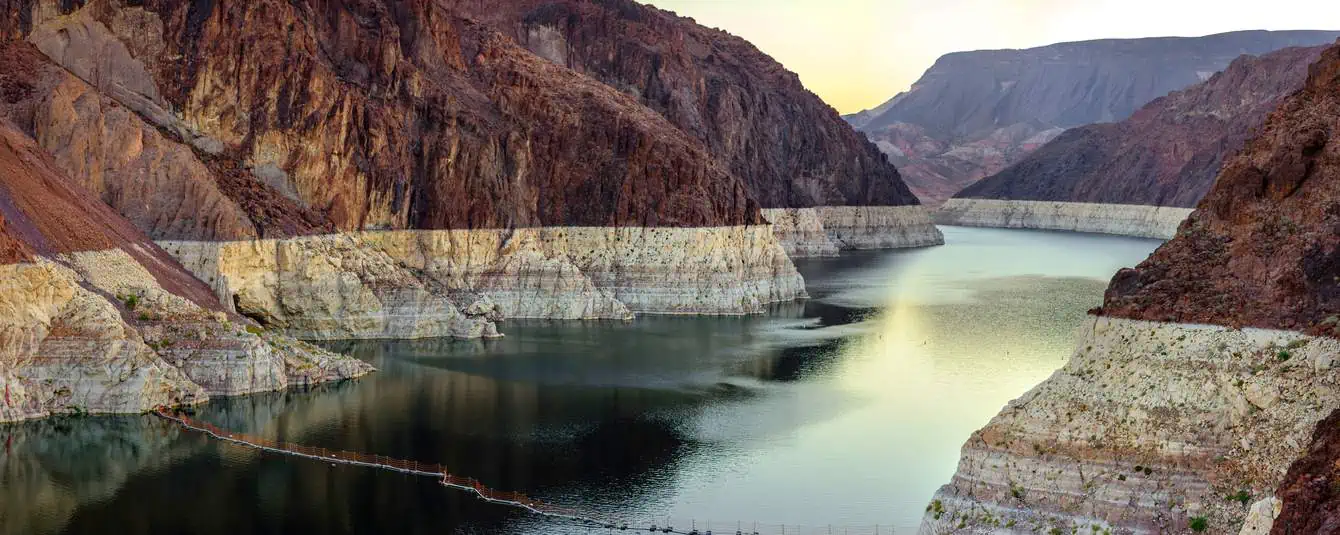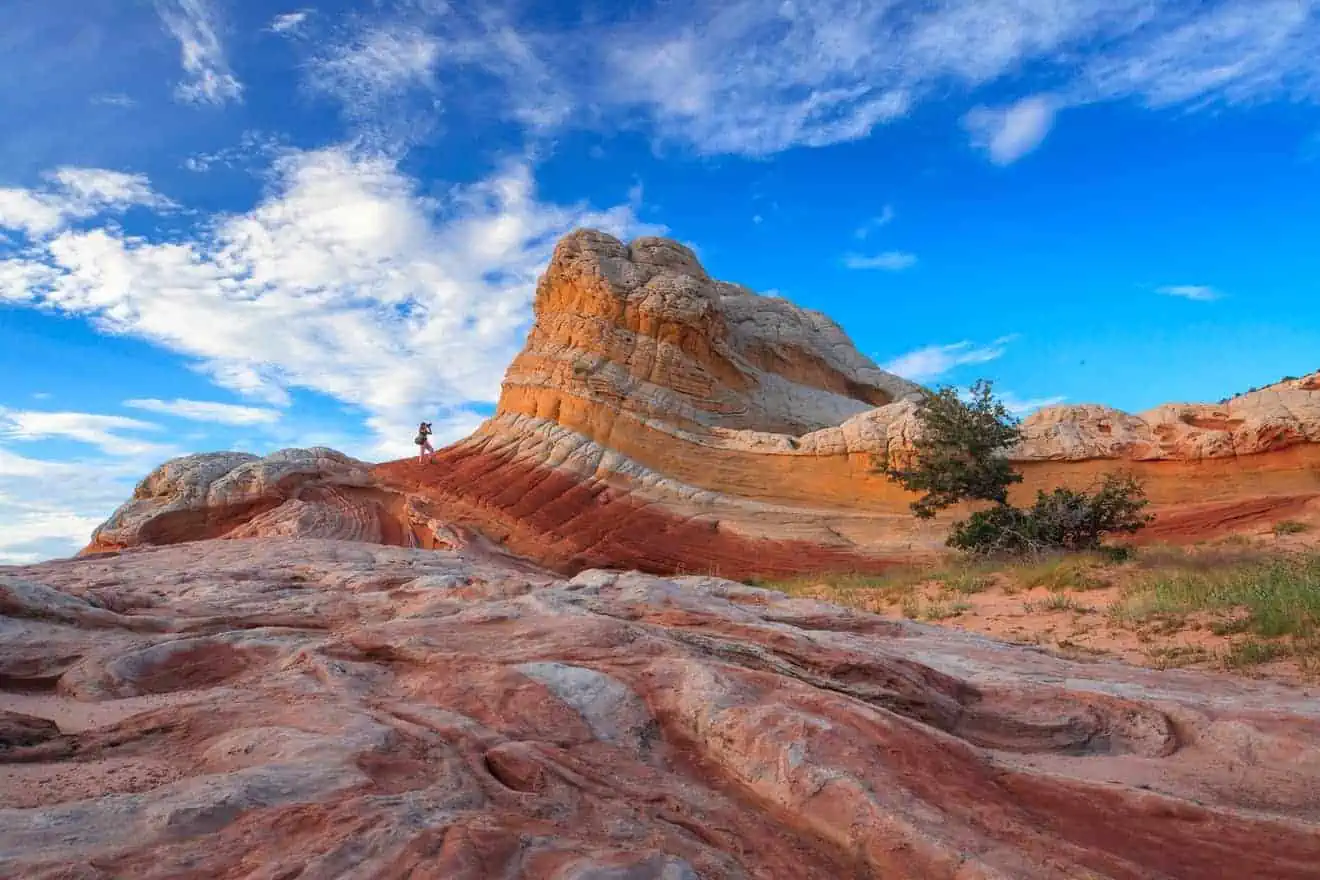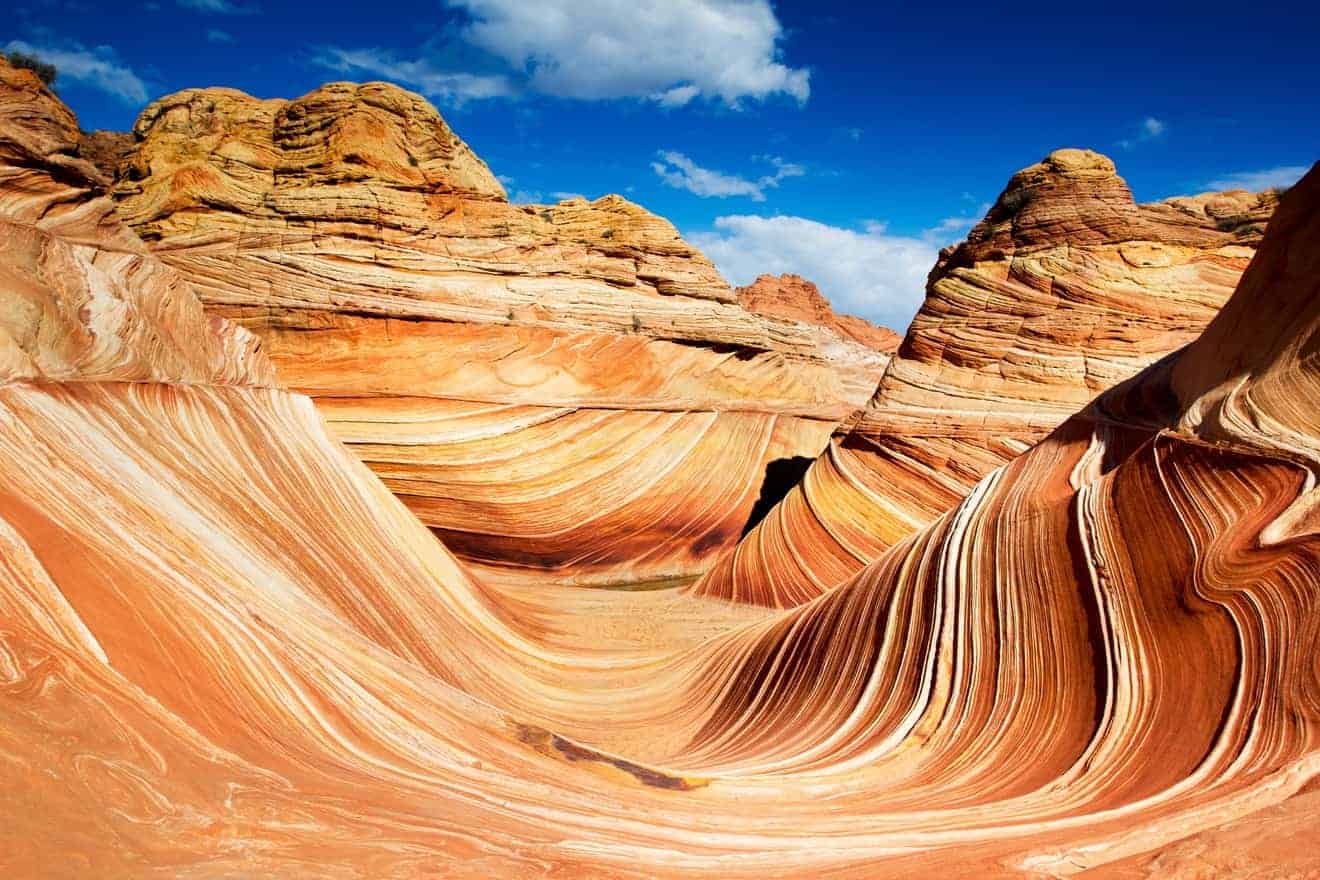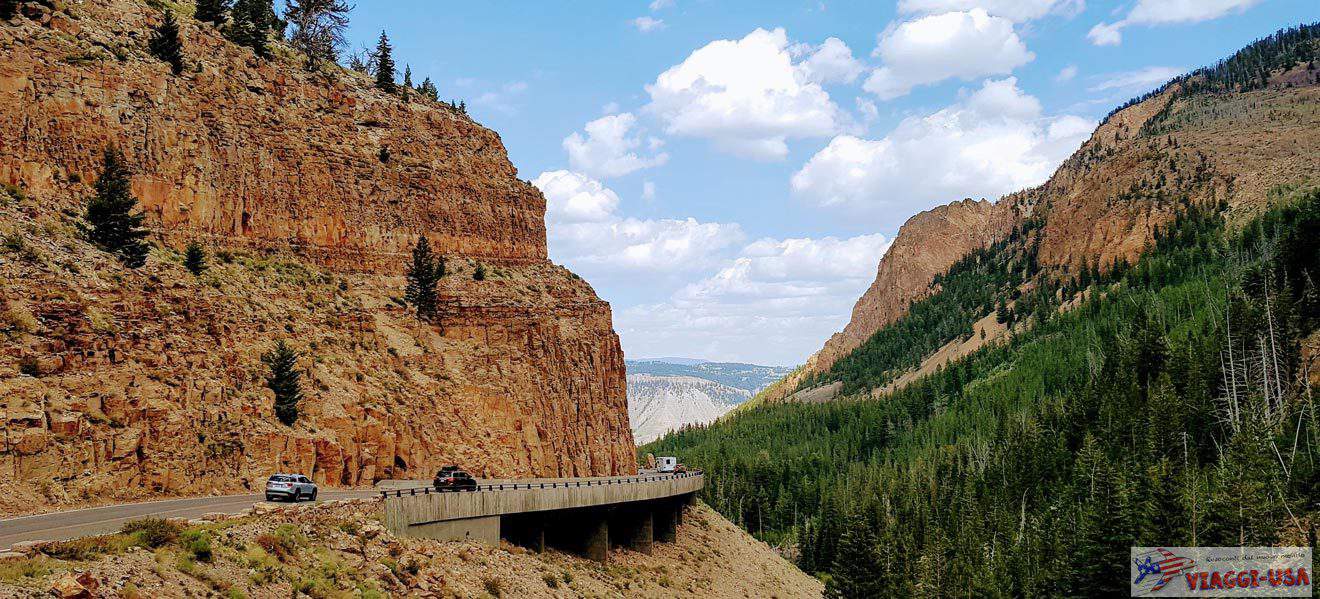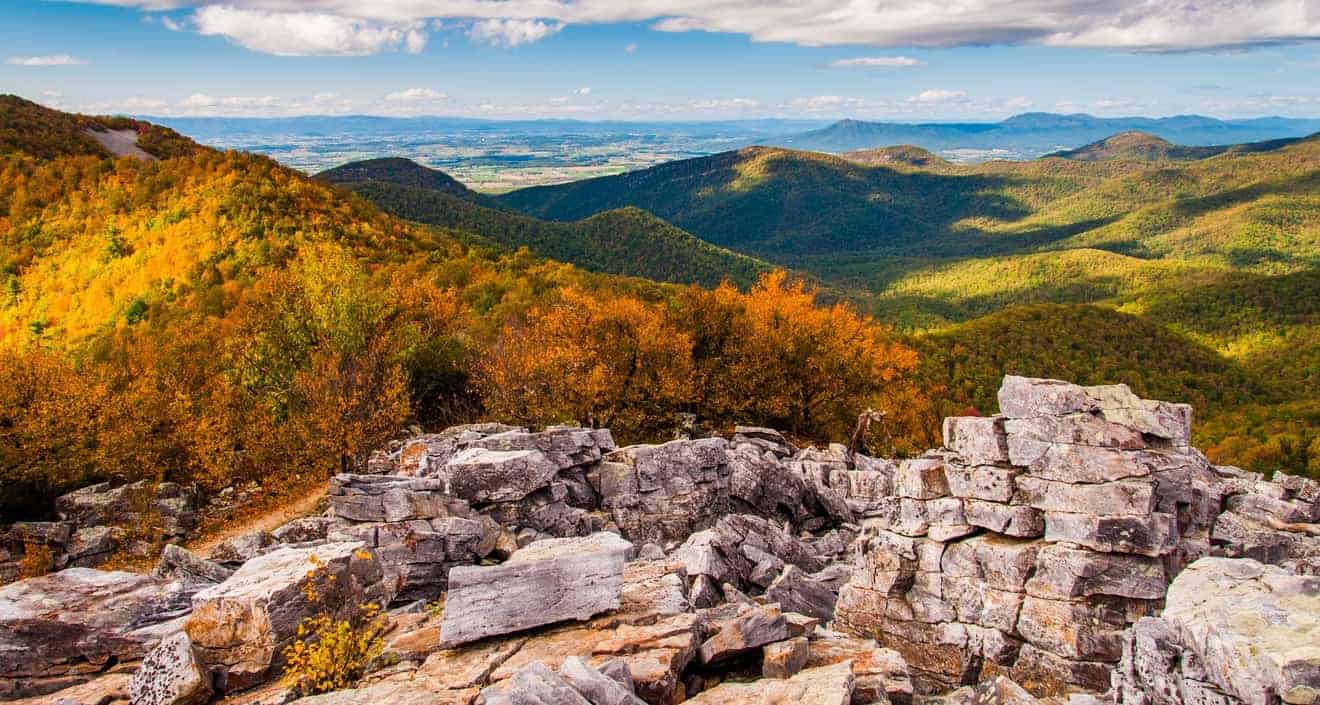Lake Mead is the largest man-made lake in the United States and was formed thanks to the construction of the famous Hoover Dam along the course of the Colorado River. It is just a stone’s throw from Las Vegas, and can be an interesting place to stop during a road trip in the Southwest. Let’s see what awaits you at this famous lake.
Contents
How Was Lake Mead Created?
Lake Mead is a reservoir created by the Hoover Dam along the Colorado River, just downstream from the Grand Canyon. Although there are other larger basins in the area, including nearby Lake Powell also generated by the Colorado River, the depth of Lake Mead makes it the largest man-made lake in the United States in terms of water flow.
Nearly 20 million people depend on Lake Mead for water supply, and it serves as the water source for a large agricultural area. In fact, the primary purpose of building the Hoover Dam was to provide drinking water to various cities in Arizona, Nevada, California, and even Mexico. When the Glen Canyon Dam, which created Lake Powell, the flow of water to Lake Mead was regulated by this dam located further upstream. However, ever-increasing water shortages have been causing the lake to remain below its full capacity since 1983.
Although this lake was created as a water reservoir, its dam also powers a hydroelectric power plant, which supplies power to several cities in Nevada, Arizona and California. Just consider that more than 15 percent of the energy produced here powers the California metropolis of Los Angeles. More importantly, without this dam, the Las Vegas we know would not exist. It is precisely because of the abundance of electricity produced here that Nevada’s Sin City was able to develop.
The lake has a very distinctive shape and its shores are extremely rugged because it runs along the course of the Colorado River, which, as we know, is famous for carving none other than the Grand Canyon. The central part of the lake is divided into two areas, the Boulder Basin (the area from the dam) and the Virgin Basin, further upstream. Between these two areas there is a bottleneck known as the Boulder Canyon. From the Virgin Basin there are two branches. One stretches eastward along the course of the Colorado River and forms Temple Basin and Gregg Basin, which are separated by Virgin Canyon. The Overton Arm, on the other hand, is a large arm of the lake that forms along the Virgin River, a tributary of the Colorado River.
Location and directions
Lake Mead is located on the Nevada-Arizona border, less than 25 miles from Las Vegas (about 30 miles from the Hoover Dam). Las Vegas is the closest major city and is a good starting point for a day trip to the lake. Driving to the lake from Las Vegas takes about 35 to 40 minutes.
Include Lake Mead in a road trip itinerary
A stop on the shores of the lake can easily be included in a road trip in the Southwest. However, given the vast area of Lake Mead and its rugged shape, there are several places one could consider and some may fit your itinerary better than others.
When planning an itinerary from Las Vegas and Utah (e.g., Zion or Bryce national parks), one may opt not to travel on the I-15 and take NV-167 instead, which runs parallel to the north shore of the lake. Along NV-167, there are a few places on the lake where you may consider taking detours to, for example, Callville Bay and Echo Bay. On this route, by taking an additional detour, you can visit the lake and the Valley of Fire.
If one travels between Las Vegas and the Grand Canyon or vice versa, the most direct route is over the Hoover Dam, which is a must. You can take a short detour and make a stop on the western shore of the lake. Instead of leaving Las Vegas directly on the I-11 freeway, one can take the E Lake Mead Pkwy (NV-564) instead, which then becomes Lakeshore Road and skirts the lake almost all the way to the dam.
Once past the dam you will enter Arizona, and from the main road there are a couple of side roads that allow you to reach the south shore of the lake, but to get there on either road would take a long time. A more convenient place to stop along this route is the area on the Colorado River downstream of the lake, such as Black Canyon.
If you want to get even further downstream and visit Lake Mohave and Pyramid Canyon, however, it is best not to cross Hoover Dam, and to travel from Las Vegas on US-95 and cross into Arizona south of Lake Mohave. The latter options are even more reasonable if one travels between Las Vegas and Phoenix (or otherwise to southern Arizona) or between Las Vegas and San Diego (or otherwise to southern California).
Lake Mead National Recreation Area: Tickets and hours
The lake is part of the Lake Mead National Recreation Area, a park where you can camp, relax on the beach, do water sports, and more. Its shores are a popular destination for people living in nearby cities, especially in the scorching summer, when it becomes an oasis where people can relax and cool off.
The park is open 24 hours a day, but the Visitor Center-located in Boulder City at 10 Lakeshore Road-is open daily from 9:00 a.m. to 4:30 p.m. The entrance pass lasts for 7 days and costs $25 per vehicle, $20 per motorcycle, $15 per person if you travel by foot or bicycle. Although it is not a national park, it is part of the national network and therefore is among the parks included in the America the Beautiful annual pass. If you plan to visit other national parks as well, it is worth considering purchasing this pass.
Lake Mead Attractions
Lake Mead makes up most of Lake Mead National Recreation Area, but there is more to it, as we will see in a moment. Locals like to vacation along its shores, since the nearest ocean beaches are on the Pacific Ocean, along the coast of California. But if you are taking a road trip in these parts, make a stop at Lake Mead even to simply linger and admire the view, or to go on a hike. Among the lake’s oddities is that an airplane rests on its bottom, specifically a Boeing B-29-100-BW Superfortress, which is a bomber converted into a reconnaissance plane that crashed in 1948.
Beaches and Viewpoints
Each area of the lake offers a number of points of interest, whether they are beaches with few or multiple amenities or scenic spots where you can stop along the way to enjoy the view of the lake. Let’s take a look at the most easily accessible points in the different areas. The northern and southern coastlines are the longest, but the most accessible side is the western coast, since it is the closest to cities and towns. The entire eastern coast, between the two branches of the lake, on the other hand, is very difficult (if not almost impossible) to reach.
West coast
The western section of the lake’s shoreline bordered by Lakeshore Road features three main locations-Las Vegas Bay, Boulder Beach, and Hemenway Harbor-and a few other lake approaches or viewpoints.
- Las Vegas Bay Marina Overlook. Las Vegas Bay overlooks the city of Las Vegas. There is a campground and picnic area, but more importantly a view over the lake. It is convenient whether you are traveling from Las Vegas to Utah or to Arizona.
- Sunset View Scenic Overlook. Further south along Lakeshore Road there is this other scenic overlook that provides an even wider view of Las Vegas Bay.
- Hatchery Cove and Saddle Cove. The first real access to the lake is from these two small coves.
- Boulder Beach. This is the first real beach one encounters on the way from Las Vegas. This long beach is a good place for a swim or a picnic in one of the picnic areas.
- Hemenway Harbor. Here you can rent boats to explore the lake or join a guided tour by boat.
- Lakeview Overlook. Located between Hemenway Harbor and Hoover Dam, this overlook offers a great view of the southwestern part of the lake.
South shore
Southwest of Lake Mead there is the Hoover Dam, which is the lake’s main attraction. As you drive further from the lake, there are fewer and fewer points of access to the lake.
- Temple Bar Marina. This is the main access to the lake from the south shore. Here you can rent a boat or kayak to explore the lake or just relax on the beach. To get there you have to drive half an hour along a side road that branches off of US-93.
- South Cove. This access is located on the southeastern side of Lake Mead, at the end of the East Branch of the lake, where the river enters the lake. From US-93, it takes almost an hour to reach South Cove. On the way, you will pass through Meadview. This area is closest to Grand Canyon West, so travelers may consider taking a detour here while driving to the Skywalk from Las Vegas. Around here you can see Joshua trees (those that give their name to the California park of the same name, Joshua Tree National Park).
North Coast
If you travel along the northern coast, you will encounter points of access more frequently than on the southern coast, since the road runs closer to the lake.
- Government Wash. This is a campground with a large beach located on the north side of Las Vegas Bay.
- Anderson’s “Children of the Sun” Sunbathing Park. To reach this park, you will turn off of NV-167 just beyond the previous stop. You will drive on a dirt road for about 15 minutes. Upon arrival you will find a large beach.
- Boxcar Cove. Another lake access similar to the previous one, located a little further on. It has two branches leading to two beaches close to each other, both ten minutes from the state highway by driving down a dirt road.
- Callville Bay. This is the main point of access on the north shore. Enjoy nice views of the lake, relaxing on the beach, hiking, and several amenities, including a bar and restaurant.
- Echo Bay. When heading north to continue along the coast of Overton Arm, the main access to the lake is Echo Bay. The drive to Echo Bay not only because of the spectacular view of the lake but also because it passes by beautiful red rock formations.
- Roger Spring. There are several springs around the lake, and one of the main ones is Roger Spring, located just a short walk from the road. There is a clear water pond surrounded by palm trees surrounded by the desert.
- Slim Creek Oasis. Along North Shore Road, so not exactly on the water, you pass by this small oasis that consists of a handful of palm trees and bushes that stand out in the desert landscape.
- Stewarts Point. Immediately after the oasis you can turn toward the lake and reach this campground with a beach and an overlook.
- Old Swim Beach. This is the last beach on the north side of Lake Mead, near the point where the Virgin River flows into the lake.
Trails and Hikes
Around the lake, there are also several hiking trails. These are some of the main ones.
- Historic Railroad Trail. This is the most famous trail that follows the route of the old railroad for 7.5 miles (round trip, about 900 ft in elevation gain) that follows the route of the old railroad. Besides offering magnificent views of the lake, the trail also passes through five tunnels carved into the rock. The trail begins at the park’s Visitor Center and it concludes at a spot overlooking the Hoover Dam.
- Redstone. Redstone owes its name to the fact that you walk among beautiful red rock formations. There is a loop trail about one mile long that is easily accessible from North Shore Road.
- Anniversary Narrows. There is another trail also along North Shore Road about 8 miles round trip (with an elevation gain of 1512 ft) along that passes through narrow slot canyons.
- Bowl of Fire. If you continue on North Shore Road, you will find a trail nestled among the red rock formations in the Bowl of Fire, to which we devoted a specific article.
- Owl Canyon. Located in the Las Vegas Bay area, on this is a 2.2-mile trail you will be surrounded by striking rocks of various colors. Owl Canyon owes its name to the fact that several owls live in this area.
- St. Thomas Ghost Town. At the north end of Overton Arm, along the course of the Moody River (a tributary of the Virgin River that flows into the latter just before it enters the lake), is St. Thomas Ghost Town. When the lake was at its highest level, this town was submerged by its waters. Today it can be reached by taking a 4-mile loop trail.
Lake Mohave, Black Canyon and Pyramid Canyon
In addition to Lake Mead itself, Lake Mead National Recreation Area also includes a large area along the Colorado River heading south from the Hoover Dam. This is where Lake Mohave, created by the Davis Dam, is located. Lake Mohave also has several access points with beaches and opportunities for swimming or kayaking. Between Hoover Dam and Lake Mohave, the Colorado River weaves through the striking Black Canyon, while between the lake and Davis Dam it goes through Pyramid Canyon, which is wider than Black Canyon. There are three main access points in this area and various activities to do.
- Willow Beach. Located just off of US-93, Willow Beach is a stretch of the Colorado River. You can camp, picnic, access a swimmable beach and set off in kayaks for a river trip. Not far from Willow Beach is Emerald Cave, which is arguably the most scenic spot in the area (also sometimes called Emerald Cove).
- Katherine Landing. While the first access point on the eastern bank is in Pyramid Canyon near Davis Dam, the second one is at Katherine Landing at the southern end of the lake. This location offers a beautiful sandy beach and boat and equipment rentals.
- Cottonwood Cove. This is the only access point on the western bank, located roughly halfway between the two dams. Here you can camp, rent boats and relax on the beach.
- Nelson Ghost Town and Scenic Natural Towers. Going down I-95, on the west side of the river, if you take a detour on NV-165 before you get to Cottonwood Cove (starting from Las Vegas, or later if you are coming from the south), you will reach the ghost town of Nelson, which is definitely worth a visit. A little further along the same road are rock formations in the shape of columns. The road comes down to the river, where there is a viewpoint and access to the water.
- Black Canyon Water Trail. One of the most scenic experiences in these parts is to go on the Black Canyon Water Trail. You descend from Hoover Dam southward on a kayak among gorges and rock formations. Book a tour through one of the vendors listed on this website.
Boat Tours and other Tours Available
There are a number of boat or kayak tours to explore the lake and its canyons deeper into the lake, which I definitely recommend, especially the tours that go to the picturesque Emerald Cave. Here are some tours available:
- 3-hours kayak tour from Willow Beach to Emerald Cave
- Day tour from Las Vegas with 3 hours of kayaking
- Guided tour of Emerald Cave, also in Deluxe version
There are also other special unique tours to enjoy Lake Mead. Here are 3 interesting ones:
- ATV tour of Lake Mead and the Colorado River
- EBike tour of the Hoover Dam Historic Rail Trail
- Mountain bike tour of the Hoover Dam Historic Rail Trail
Where to Stay Nearby
In terms of places to stay overnight near Lake Mead, there are several places to camp, but only one place where you can find accommodations, in Temple Bar. Then there are also two others on the shores of Lake Mohave in Cottonwood Cove and in Katherine Landing.
If you want to have a greater choice of lodging, you can look in Boulder City, near Hoover Dam. A couple of options are The Sands Motel and Boulder Dam Hotel. Not far from the southeastern coast, on the other hand, there are interesting places to stay overnight, such as the Grand Canyon Western Ranch, an authentic ranch experience a short distance from the Grand Canyon West Rim. On the north side, not far from the Valley of Fire, you can stay at the North Shore Inn at Lake Mead, on the way towards Utah.
All accommodations around Lake Mead
Finally, the most popular option is to stay overnight in Las Vegas. The city offers an incredible array of hotels that can accommodate all budgets and needs. Since Las Vegas is not far from the lake, it is perhaps the place where it is most worthwhile to look for a hotel. Given the great variety of options, we have devoted a specific article on where to stay in Las Vegas.
